Build the Wall
A silly, provocative, but accurate, title
What is Normal?
Increasingly, in recent years, it has come to my attention that I have a different mind. This is sometimes a very good thing, sometimes not so good, but however I look at it, my mind is always uniquely mine. Rather like yours, I suspect: we are all so very different, after all.
I sometimes wonder what is normal, when it comes to the way my head works—for a long time, I thought normal meant what I did, how I did things, what and how I thought we all do, but now I know that is not the case. Instead, apparently, the majority see the world in a different way—you don’t script entire conversations that need to happen before the event, or replay those from a year ago to see how you could have perhaps said something different to fit in better.
It has been a strange and awakening time for me, these last few years.
Fertility, Buried
One thing this brain of mine does is see things in a way others do not always initially perceive. I see further, longer into the future, deeper into the past. The patterns and the chance are there for all to understand, if only we open our senses to them. An example of this can be found in the terraced area we’ve been working on at the mountain house, here in the French Alps.
Once upon a time, the slopes surrounding this little village were all terraced. Each level relatively narrow, supported by stone wall, carved from the mountain and fertilised and tended for hundreds of years. Then, at some point roughly sixty years ago, the road above the village was modernised. Pilgrims needed a better, faster way to travel by bus, rather than on foot, speeding up their healing, rushing through a miracle. Thousands and thousands of tonnes of rock were blasted away, split with monstrous drill bits, smashed, cracked, dynamited, then moved. And they needed to be moved somewhere.
The owners of the mountain house back then did not live in it and no one had, for a long time. Instead, they made a deal—repair and modernise their home, and all that rock can be dumped over the gardens behind the old house. And that is what happened. When my in-laws bought this place, as a ruin, circa 1980, it had a tree growing inside it and, behind, the gardens were covered in a man-made scree slope, big boulders, giant rocks. All that fertility seemingly gone.
When I arrived here, not that long ago, I was irritated by the tonnes of rock, especially as everywhere I looked, to paraphrase Howard Carter, I saw wonderful things. All that rich soil buried, all that work and potential hidden. There was a small terrace behind the house, barely a metre or two wide, but then it was all boulders and stone, tumbling slowly downhill as gravity did her thing (I’ve always thought of gravity as she, is that odd?).
My brain is different. Did I mention that?
Phase One
The slope needed urgent stabilising, that much was clear, so I began to build a wall. I’ve built walls before, but not on this scale, and I used the techniques I knew—Orcadian drystone walling, with a touch of Yorkshire and Derbyshire Peak District thrown in. The rocks here can mostly be split and cracked, so I used a lump hammer when I needed to, slowly building up the height, to stop gravity’s effect, put a pause on the collapse of the tiny terrace, and create a better pathway, with steps, up the slope. I used an ancient wall as a base and began to go upwards.
At first, the family and friends thought I was a little crazy, some worried it would not work, that it was dangerous. It was a lot of work, after all, but, as often happens, once I started a thing, they began to see the possibilities too, later joining in to aid in the construction. If you begin to build a thing, eventually, others will want to help.
Phase Two
That, however, was just phase one. I envisaged a larger terraced area, a removal of the rocks, using them to strengthen the slopes and generally turn them into something more useful once more.
This summer, I have worked on this terrace for roughly three weeks, with help at times, but also often alone. I have moved and removed and moved again scree and stone, soil and rock, estimating that each stone has been shifted at least three or four times, sometimes more. By hand. For most of this work I have used a mini-mattock/pick, and a NATO entrenching tool, and little more. When it came to building, I got out the lump hammer and, when it came to shifting the boulders too heavy to move by hand, we used an old come-along and a thick steel bar—an old drill bit from the days of the road construction above, solid, long, and strong.
I do not know the weight of all I’ve moved, but it is undoubtedly hundreds and hundreds of tonnes.
My body aches, I have crushed a finger or two, cracking at least one bone. I have experienced central nervous system fatigue (coming neatly at the point where I left to spend a couple of weeks on holiday in the camper van) and, above all, I have witnessed my vision take shape and become something approaching reality. I am, as a by-product (if one I had hoped for), stronger and fitter now than at any point in the last few years—fitter physically, yes, but also fitter mentally. Hard, physical work, in tandem with deeply thinking things through, will do that.
As I have worked, I have solved issues in my fiction, composed entire articles and posts, taken notes on my phone, oral and written, and thought, deeply, about a long list of points.
Today1, the rain is here, autumn in the high places approaching rapidly, summer—a long, hot, fiery and dry summer—sighing in relief. I am typing this indoors, itching to get the walls we have been building finished before winter, if possible.
To build a thing which could, quite feasibly, not only outlast me, but hang around for thousands of years, is a powerful feeling, one I enjoy immensely. These walls are over a metre thick, careful placement of stones big and little, gaps filled with rubble. They are locked into the bedrock of the mountain, attached to an ancient terrace wall too, foundations dug out of the rich soil we have exposed, a healthy height of the wall now hidden from view as we back-filled the trench. Some of the rocks incorporated into the structure are vast, one in particular too large to even consider moving—to try might have entirely destabilised the slope above, after all, better to leave it there, looking for all the world like some sort of pagan altar.
Phase Three
All this from the potentially crazy vision I had over seven years ago. Once this terrace is finished (which also includes the formation of fresh gardens for herbs, for food, for flowers and trees and berries, lots of berries), then the next project is already planned.
Ostensibly, I want to build a playhouse for our daughter, Ailsa, but this is not going to be a plastic or wooden affair. Nope, I want to build a playhouse with internal fixtures, a playhouse with a fireplace, a playhouse with windows and a tunnel-like entrance through thick stone walls. I want it to mirror a Scottish Bronze Age roundhouse, but also include a little bit of the Neolithic, a little-bit-Skara-Brae. I might even steal some techniques from Iron Age wheelhouses. Potentially with another, smaller, building nearby, to act as a smithy.
The back wall, the northern one, will be built against the bedrock of the slope, the whole hidden from view by trees and angles but, in theory, there should be no problem with the local Mairie/council anyway, seeing as it is simply a garden structure, a “playhouse” (if a playhouse which could very easily be lived in).
I have already chosen the trees I need to fell for the roof, and I know the location—the opposite side of the land to the terrace we are building now, just beyond the black poplar, near the rotting, thick vertical trunk of a birch the owl often haunts. There, there is a flat area, away from the road, a space the dump-trucks failed to fill with boulders. There are some big ones which must have rolled, but we can shift those and include them in the walls, slowly chipping away at the scree slope to the east, boulder by boulder, rock by rock, repurposing. It is not a quick business, but it is one which feels ancient, with a sense of deep time. Building also enables the ancient terraces to be rediscovered, to one day be replanted.
An Anchoring
When I am out on the mountainside, birdsong anchors me to this place as successfully as the scent of rock dust, of the compacted soil broken up for the first time in generations. Digging up ancient bones, rusted tools, pieces of pottery, glass bottles, miraculously whole, military buttons from the 19th century, and other artefacts securing me here in place, as effectively as a chain.
I uncover a rodent nest here, unearth a surprised, sleepy baby salamander there, tuck a fallen feather from an owl into my pocket, another into my phone case, both clearly left for me as some sort of offering of thanks for disturbing those rodents. The feather in my pocket sits beside some seeds from the gnarly black poplar (Populus nigra) I want to try to propagate, and a couple of fallen walnuts (Juglans regia) I collected, for similar reasons.
I think of other trees to plant, those that will grow at this altitude: plum, pear, cherry, and apple. I ponder how we will heat water if, or when, there are no gas bottle refills to be found. How could we channel and collect that water, how would we cook, what we could cook. Questions, questions, questions.
I have uses for some of the things I find, hardened, yellow bone for carving, for buttons and toggles, some suitable for Sami sewing kits; archaic knife blades to gently coax back into life, new handles to be added, sourced from this same place, blades reground, perhaps re-tempered; tiny glass bottles to use for decoration and perhaps natural inks both, buttons maybe sewn back into use, their first touch of thread for well over 150 years. I have a large pile of old tile fragments—what for, I do not yet know, but they will find a use.
There are also small stashes of wood, seasoning for projects here and there on the rocks: elder for hand drill, for flute, for tubes; ash for staff, spear, and bow, ash bark rolls to make a quiver; wych elm for bows and decorative pieces and carvings (both ash and elm were once sacred in the north; both, along with the birch, old friends from Scotland); Norwegian maple for hand drill hearth; ivy likewise. There are more.
There is so much life and opportunity in this little corner of the world, and I want that to continue long after I am recycled back into the land. Each thing I find is a gift, each thing one piece of a puzzle, and each given because I opened myself up to such a gifting. Tend to a place and it tends you right back.
And all this because I looked at the rock-strewn slope and saw beyond in time—beyond backwards and beyond, forwards.
My brain is different. I work at different scales. I do not live for the weekend, I live for a possibility of life, interest, and joy, each existing long after I am gone.
All Our Visions
These visions are not unique—you probably have some of your own—and they are increasingly essential in a human world which feels so very out of touch with itself. This summer has been one full of ripe crops and bumper harvests. An excellent year for raspberry, for blackberry, myrtille, mulberry, nettle, elder, walnut. Everything with berry or seed seems to have thrown out the chance of reproduction, all at once.
Historically, we would say this means a hard winter is coming but, these days, who knows? Something hard is coming—is already here—that much is certain. Everything is in flux and will remain so for countless generations; potentially, and increasingly likely, for tens and hundreds of thousands of years. So it has been in the past, so it will be today and tomorrow, we have broken things, and we have no collective will to fix them. We have failed to reframe this climate crisis as one which ultimately threatens our survival, rather than that of the world. The world will heal, eventually, over scales of time we often fail to comprehend—unless, that is, your brain is different. What won’t heal, however, are countless species which shall disappear. Likely including ourselves.
All we can do is keep to our visions, keep using these strange brains of ours, and keep listening to the potentials the land gifts us, acting on these to ensure we do all we can to nurture, protect, and share what is good, joyful, and kind.
Strange, different brains will be an essential in the coming years: sharpen yours, and keep it sharp.
Some Housekeeping/Other Words
Here at The Crow’s Nest, it is a busy week. I am sharing the above as a method of launching myself straight back into work without apologising for silence. However, if you do want to know more about my silence in recent months, I have also just posted a long essay, The Balance of Hope, up on my Substack page, without sending it out via email (at least, I didn’t mean to send it out! If I did, apologies!).
This post is not entirely comfortable reading, addressing the darkness into which the world is slipping, but it also talks about rekindling and retooling hope—specifically, my hope.
Also this week, I am sharing my first ever voiceover for a letter, the one you can find above, in my own voice: a voice I have never been comfortable hearing, but it is mine, and I realised it made sense to share my words in my own tongue, rather than that of a robot. (And, after leaving Scotland, over eight years ago, and not living in an English-speaking country since, I’ve heard from a lot of people whose native tongue is not English that I mostly speak clearly. Which is probably a good thing (a part of me would still love to have picked up/held on to an Orcadian accent, though).
I realised I could also then use the voiceover and send it out widely as a podcast. Something I have never done before. On which note, I share an introduction to that podcast—Voices From The Crow’s Nest—here (please be gentle!):
Introduction to Voices From The Crow's Nest
As this is the first ever time I have shared a podcast, or even recorded my voice to share with the wider world, there may be the occasional error or mishap. I apologise in advance.
As if that wasn’t enough, I am also about to once more share A Fall in Time. In case you do not know, this is the story of how I left behind my last ‘proper’ job, caught a series of trains, then headed out on foot into the coastal woodland of western Scotland, where I stayed from late summer until early winter.
This is almost certainly going to be the final time I share this limited series here, and it was the impetus behind pushing past my ongoing reservation and trepidation regarding my voice.
I shall share a Note daily, detailing moments and thoughts and sharing photos from the corresponding date, back in 2010 and, this year, the weekly compilation of these Notes, shared every Saturday with extras, will also be available as a voiceover and podcast. I am toying with the idea of using other spaces to further spread this story, too, but more on that if or when it happens.
Crucially, however, if you are already subscribed to The Crow’s Nest, you will not automatically be added to the mailing list for this iteration of A Fall in Time. I do not want to spam those of you who do not want to receive the same letters again (even if there will now be those voiceovers and some as-yet-unannounced extra content).
If you DO want to receive these letters, go to your account settings below, then select which notifications you want to receive (in this case ‘A Fall in Time’—not the one with ‘archive’ after it!):
https://alexandermcrow.substack.com/account
(It would be remiss of me not to give a big thanks to those of you who answered my queries about whether to reshare A Fall in Time, and offered thoughts and advice on sections, books, voiceovers and podcasts:
; ; ; and . If I missed anyone, sorry!)Likewise with the podcast, unless I did something wrong, I am not adding my subscriber list to this—you have to sign up yourself, if you wish to. Again, I think you can do this from your account settings (I think there is a button under ‘Private podcasts, below Notifications, entitled ‘set up’):
https://alexandermcrow.substack.com/account
In theory, if I have done things correctly, you should also soon be able to find Voices From The Crow’s Nest in several other podcast platforms/apps, too (eg Spotify, Apple, Overcast, Podcast Addict etcetera), with others forthcoming.
For both A Fall In Time and Voices, however, I will continue to signpost via email and the Substack app, sharing a monthly ‘What You Might Have Missed’ letter which, in this age of over-information, just seems sensible.
Finally
Phew, that’s a lot, right? With a lot more to come, too (including recommendations for the work of others, I have already started keeping notes on these and shall share more soon).
Any questions or thoughts on the above, whether the essay about the terrace, or the news below, do please let me know.
If you find value in these words and wish to support me financially, but do not want to take out a subscription, you can send a one-off tip via this button (a method I am really seeing work well here, more so than subscriptions. Thank you):
Many thanks for reading, I love knowing I am sending this out to so many friends (and family!), that it will be read and pondered and shared. That is honestly somewhat wonderful magic and I never, ever take it for granted. Thank you.
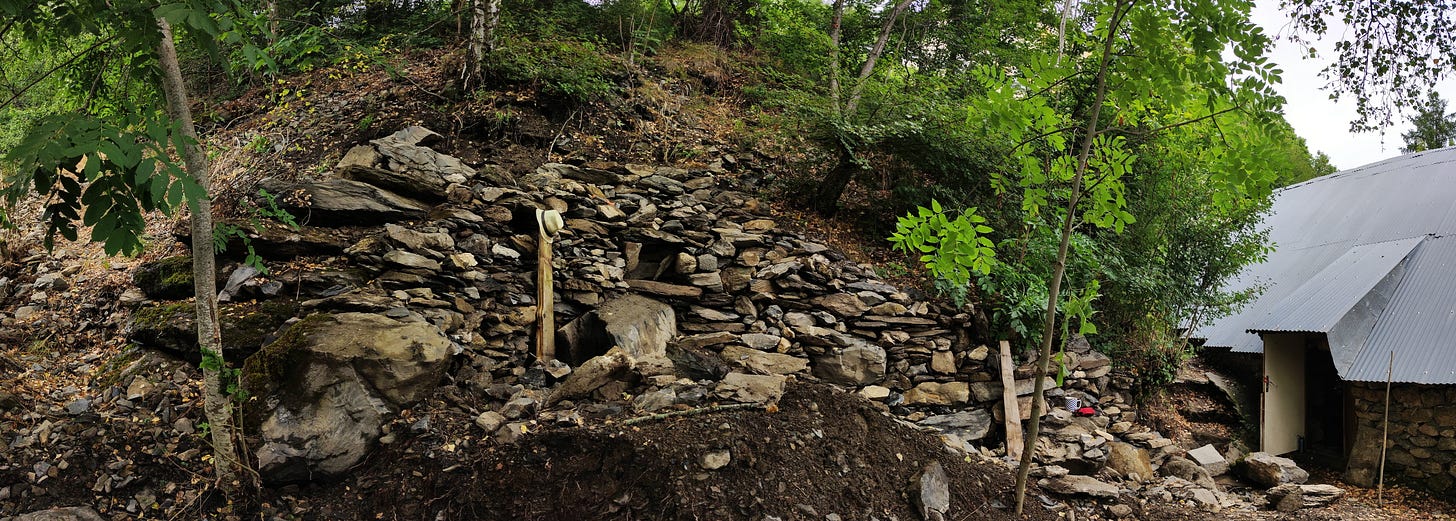
(as I drafted this. Now, as I edit and format, I am home again.)


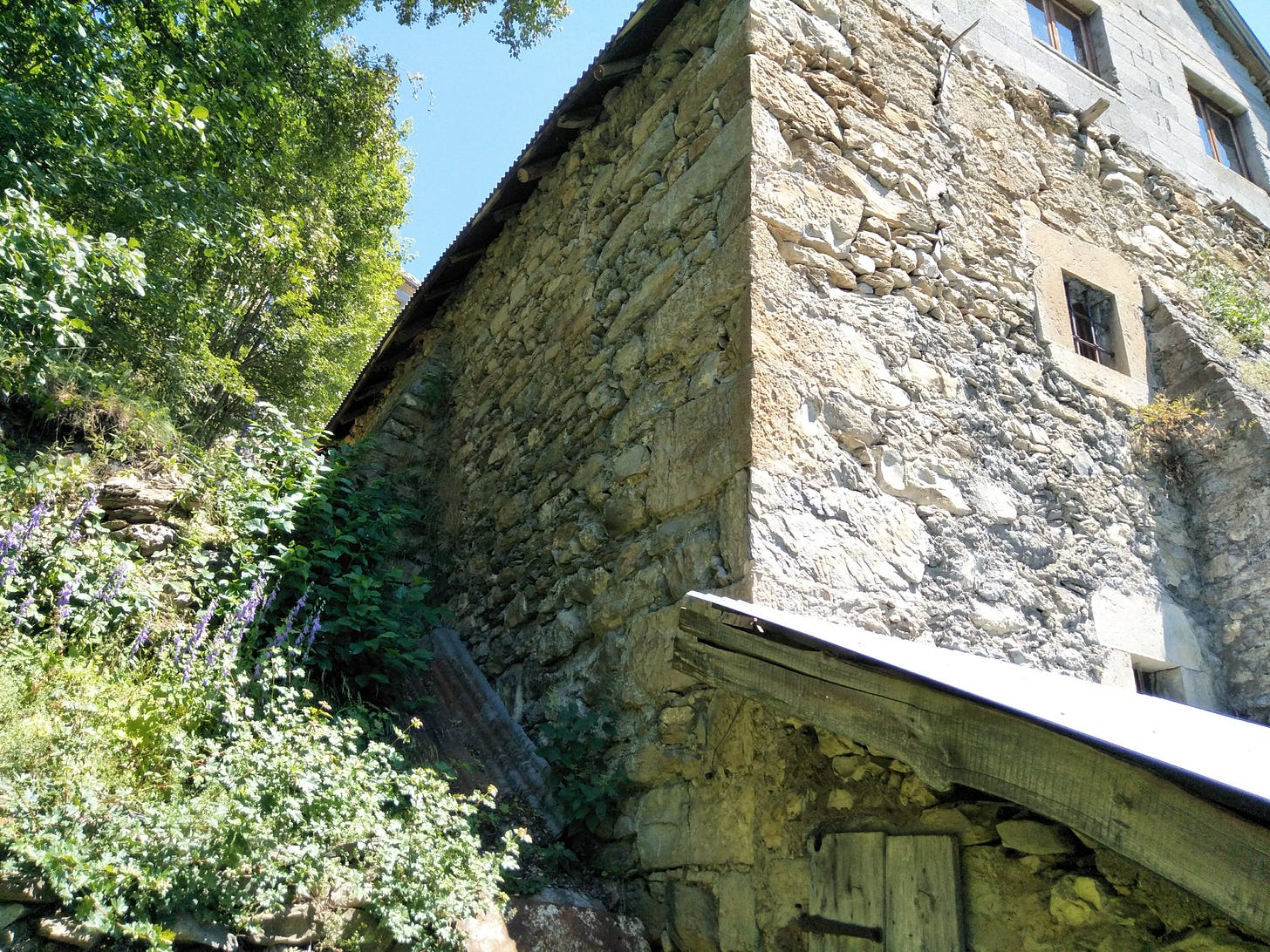
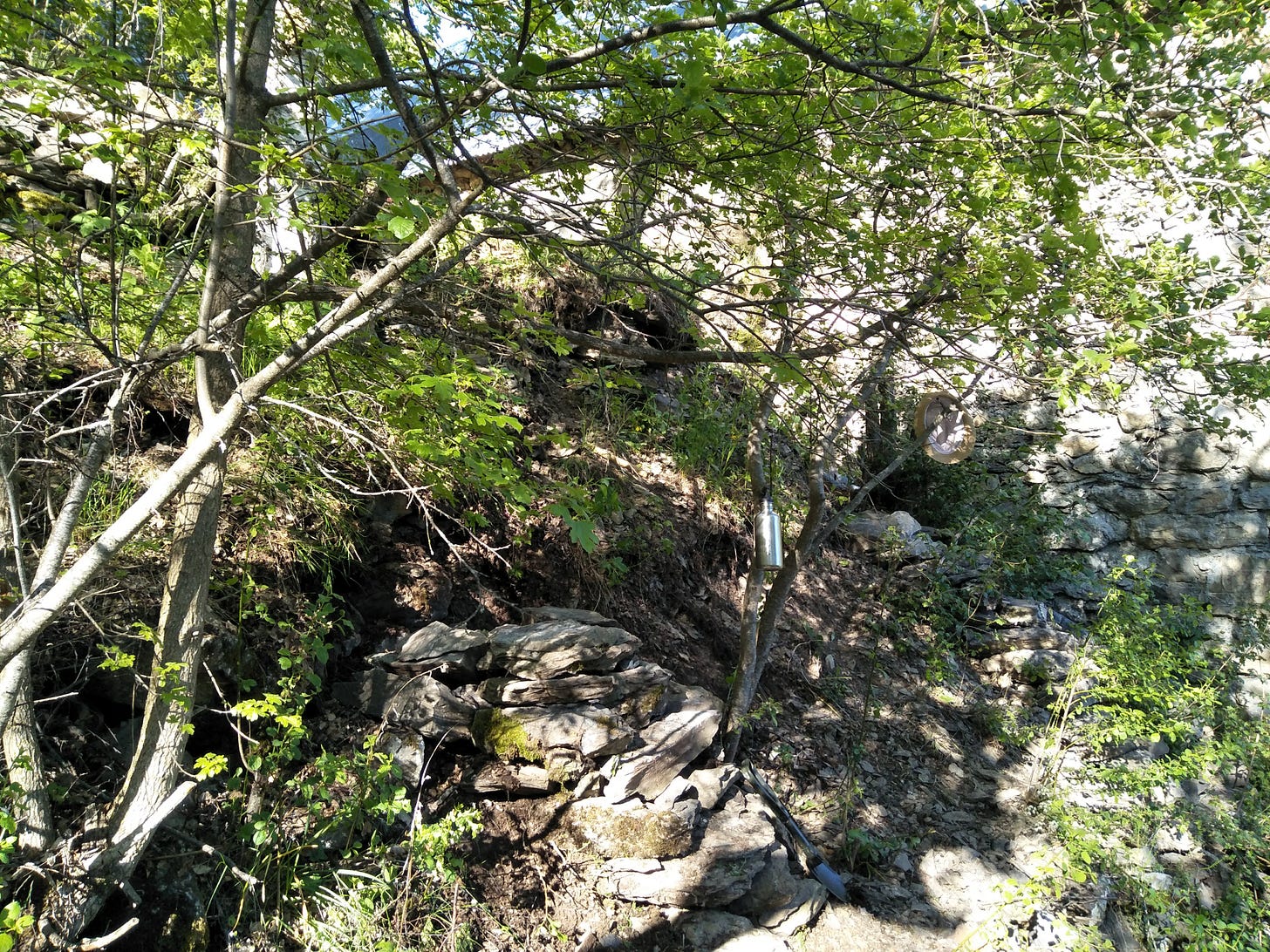
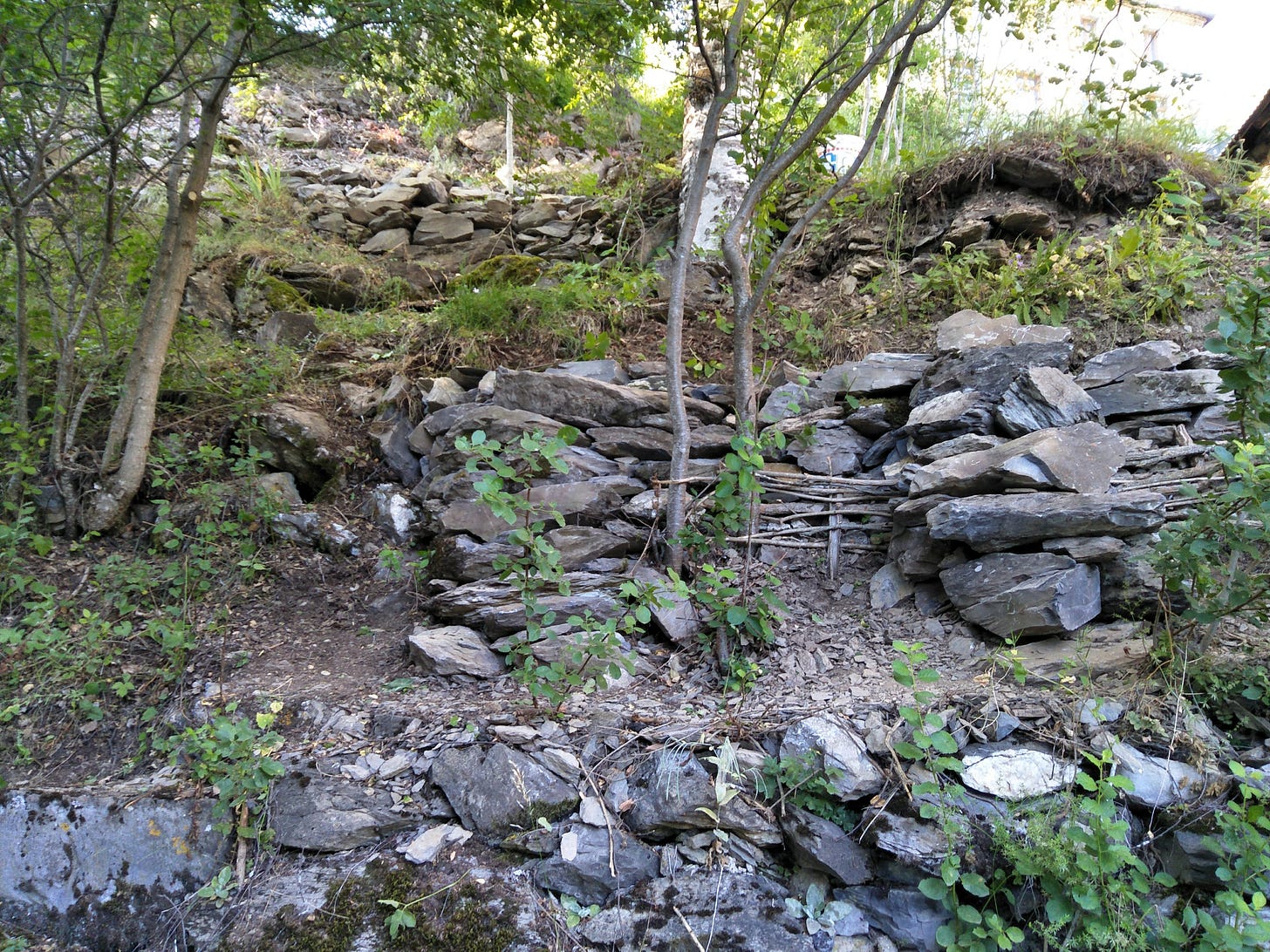
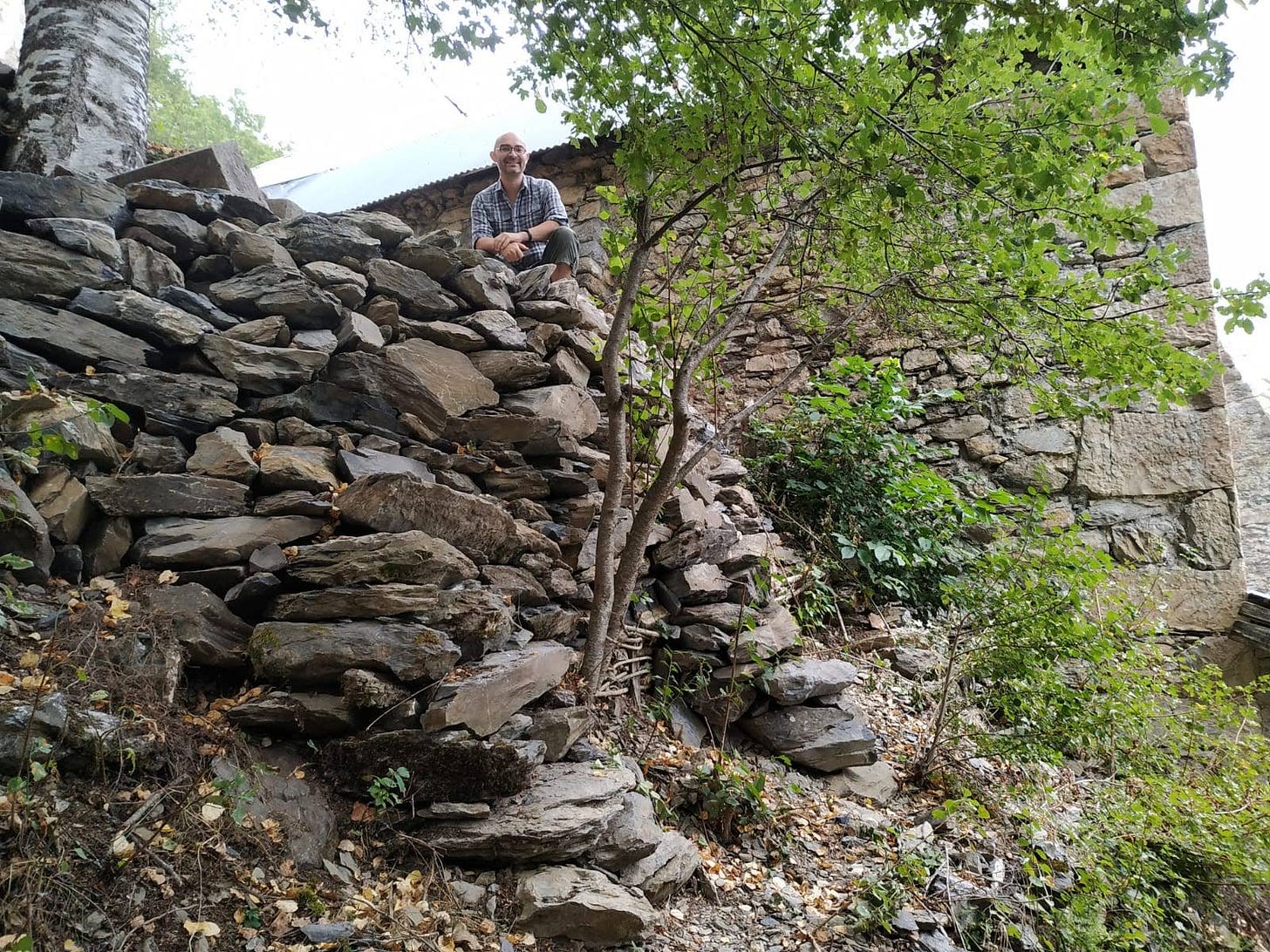
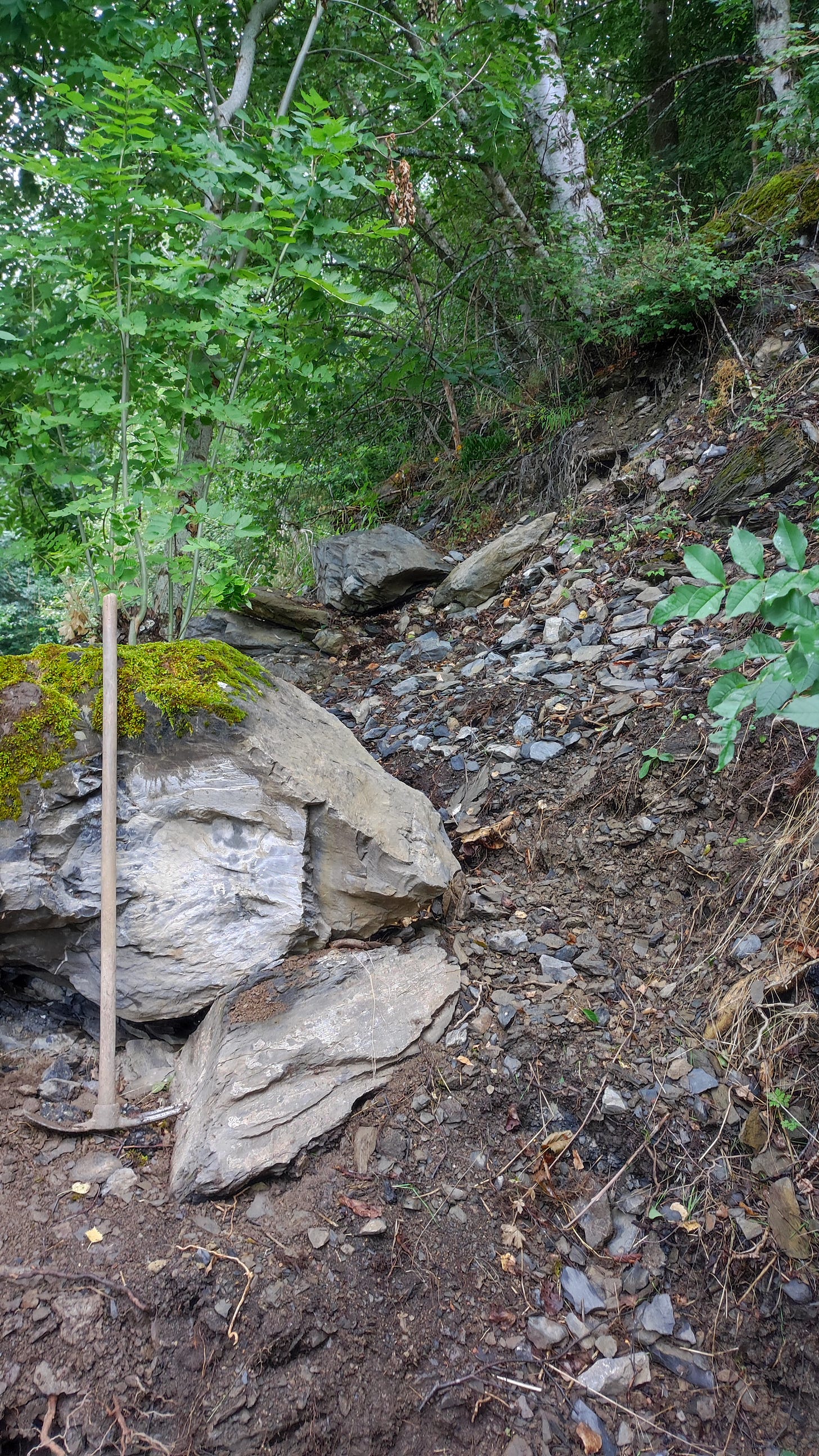
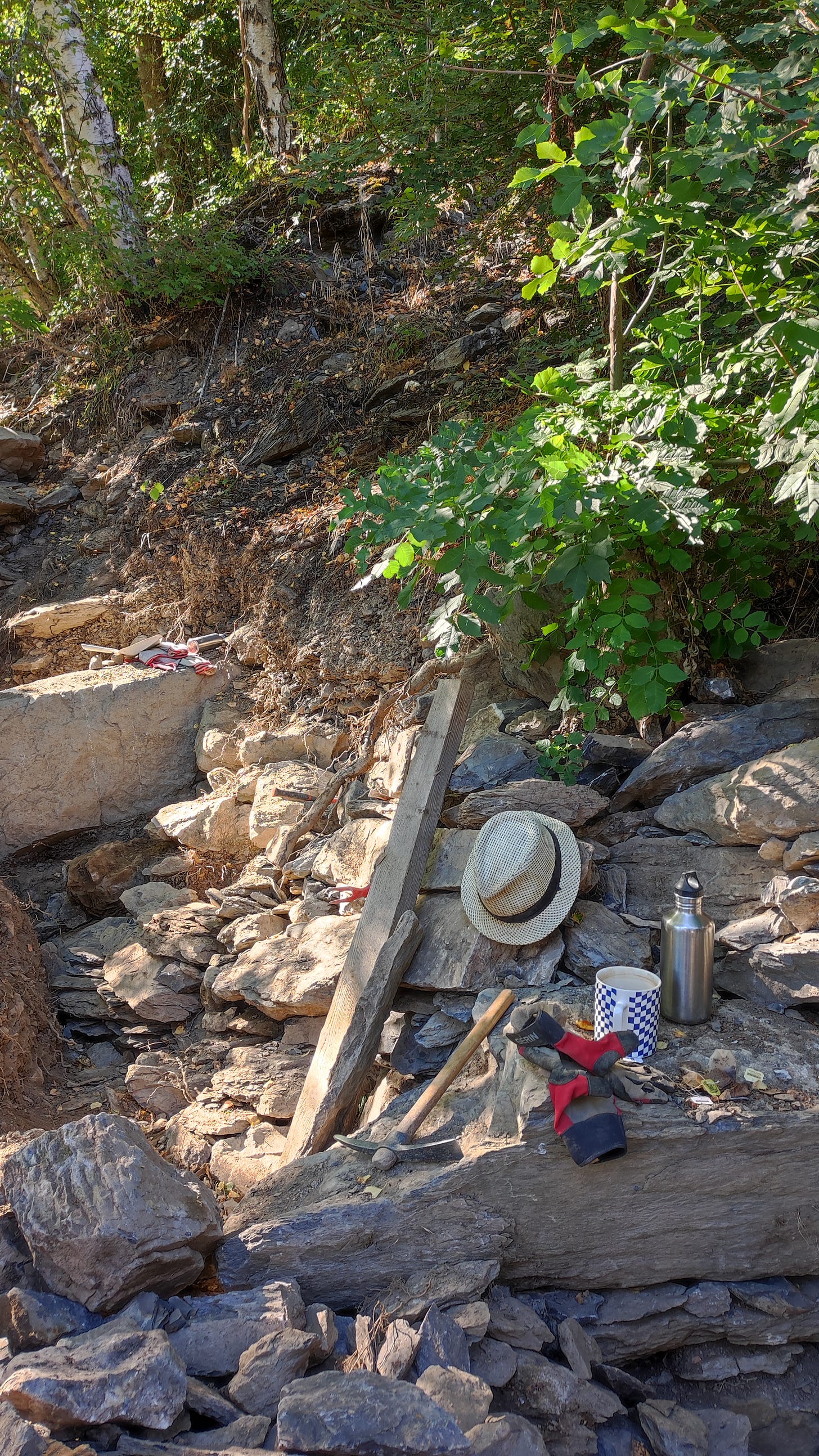
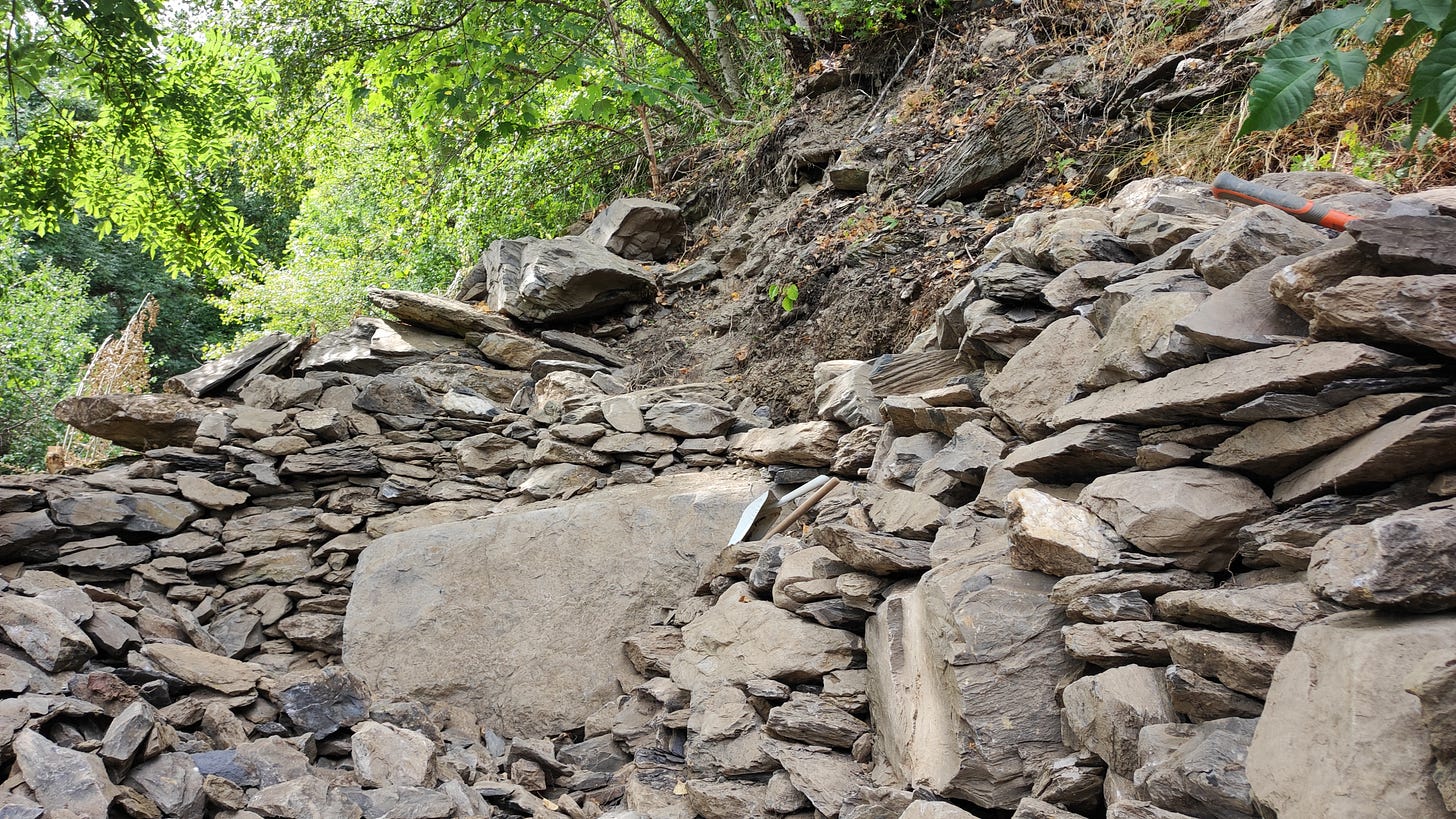
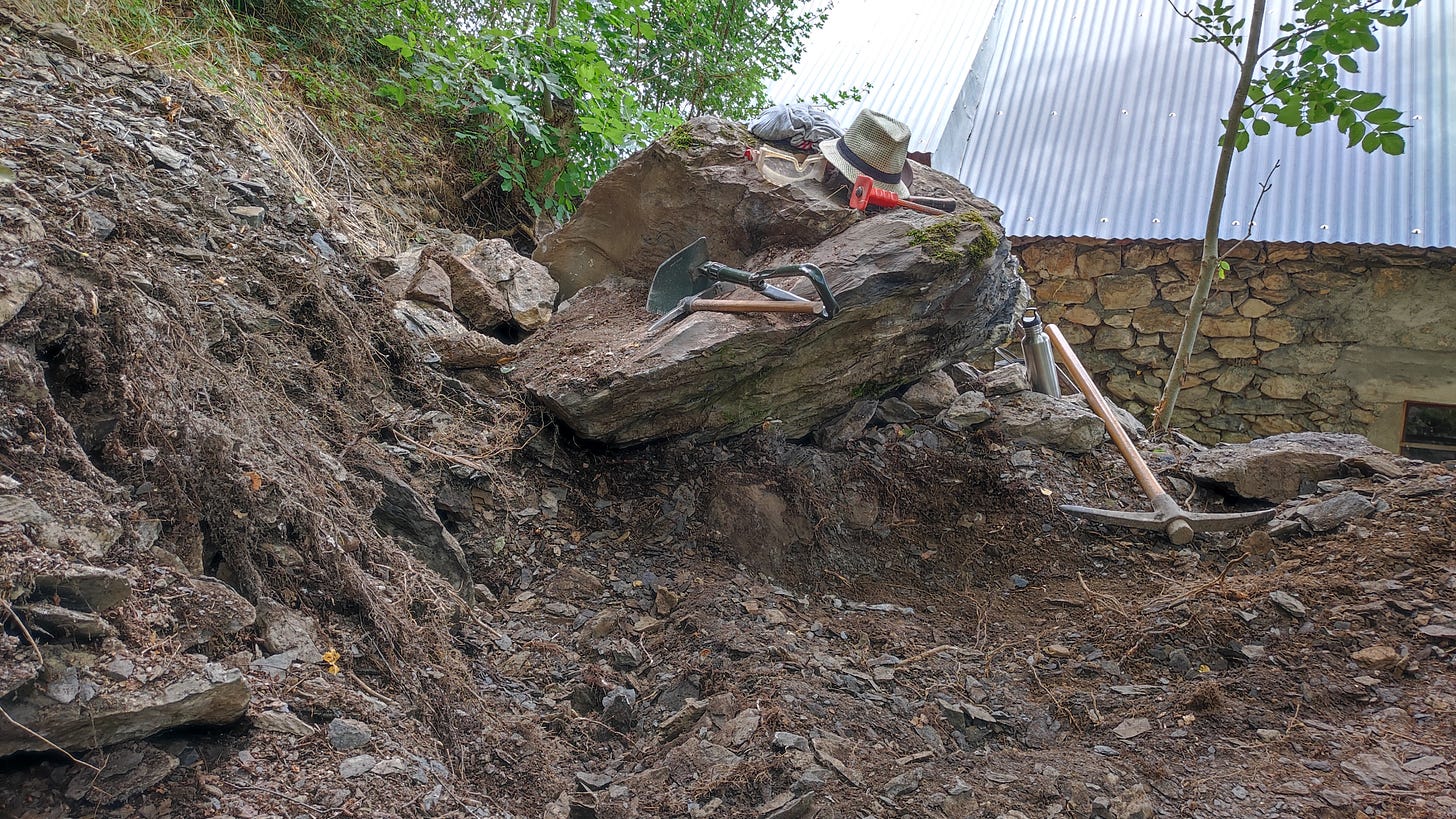
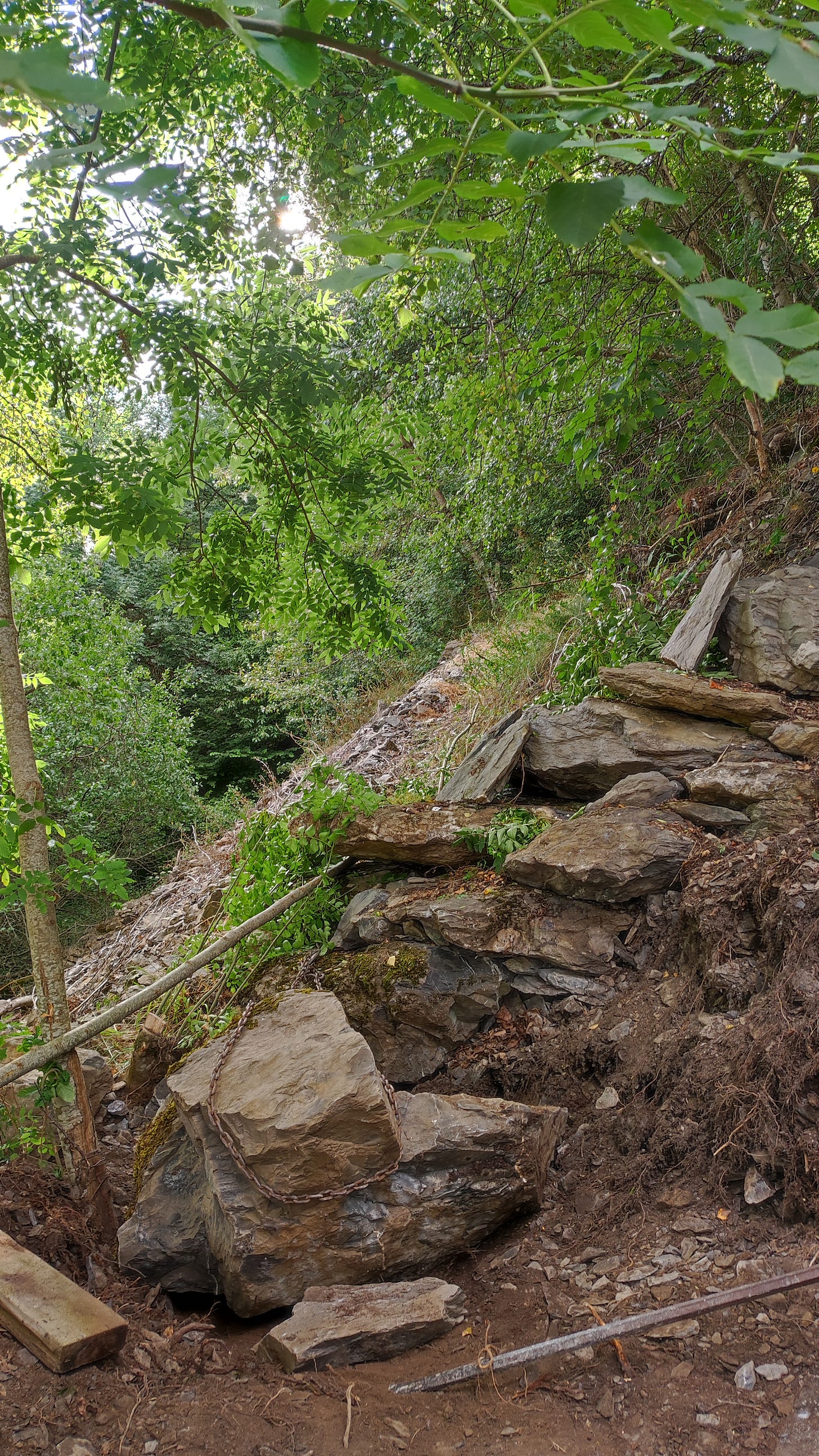
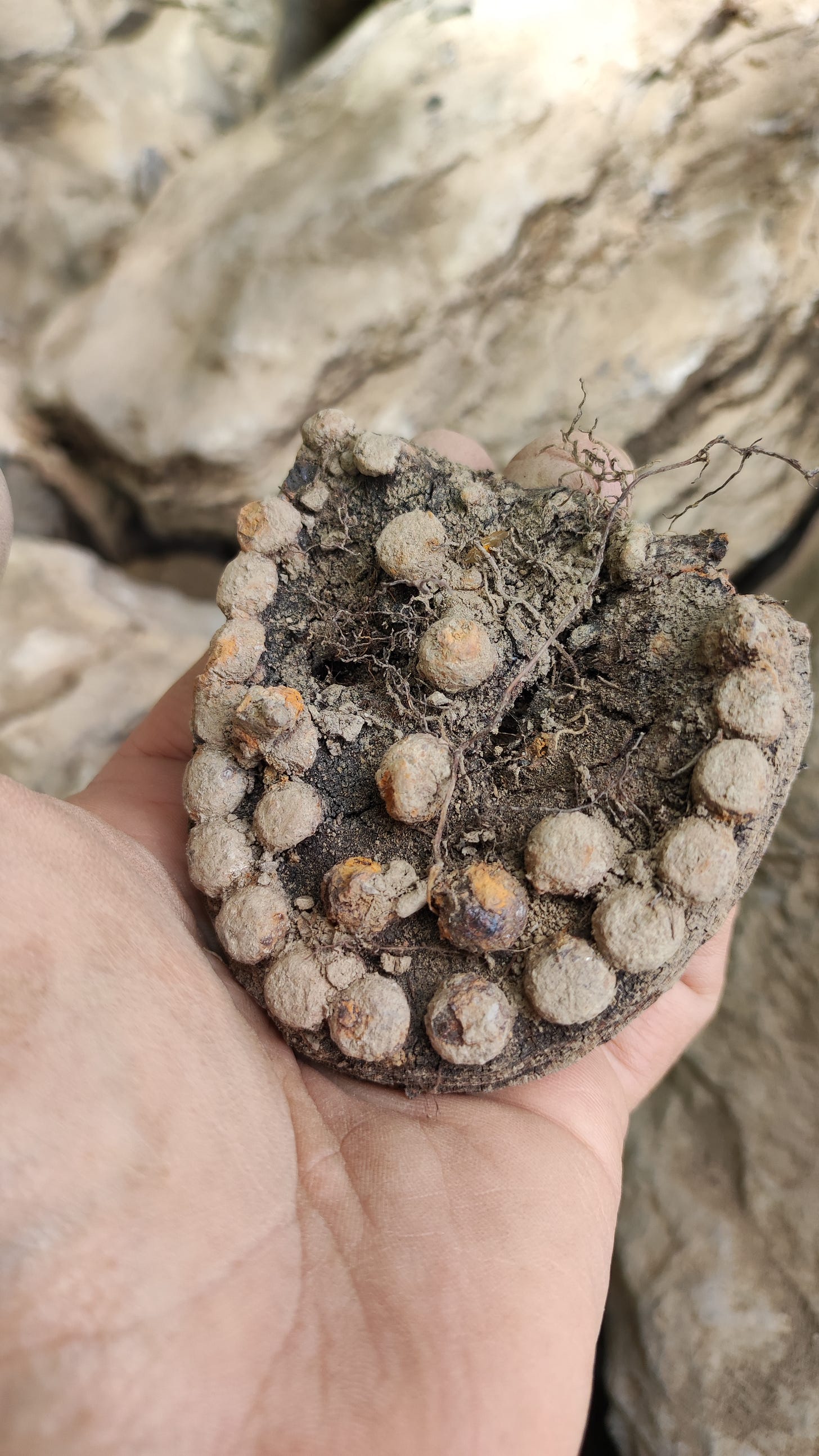



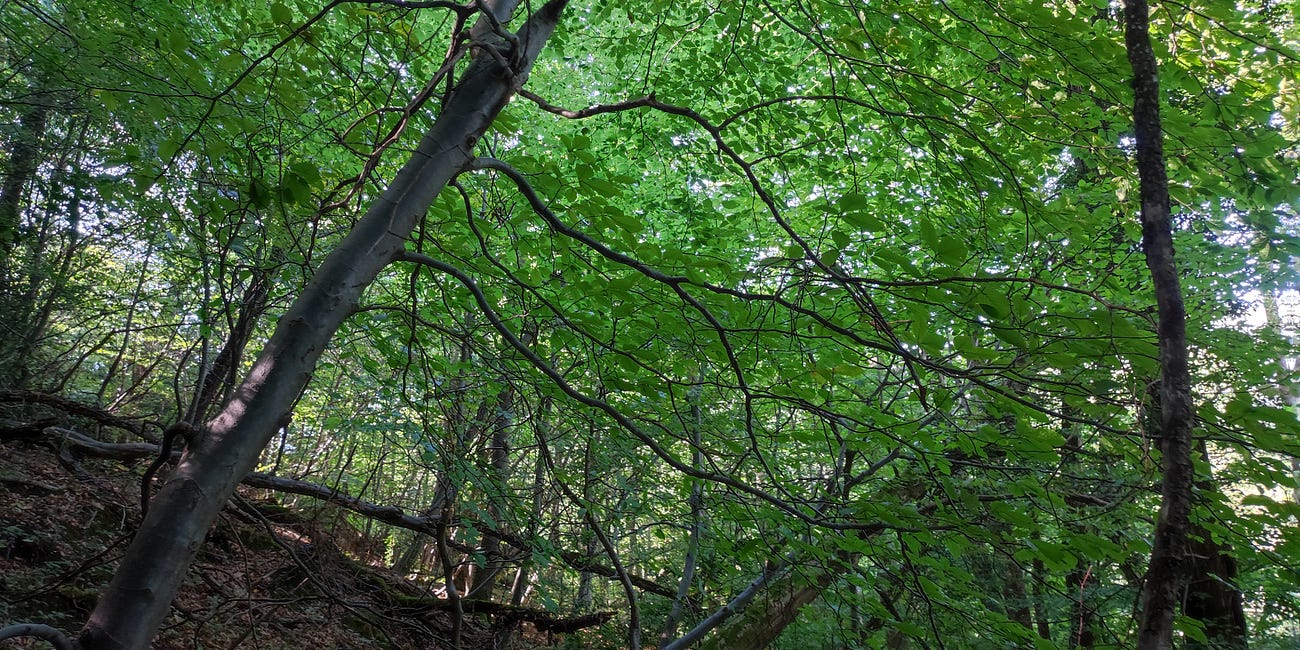
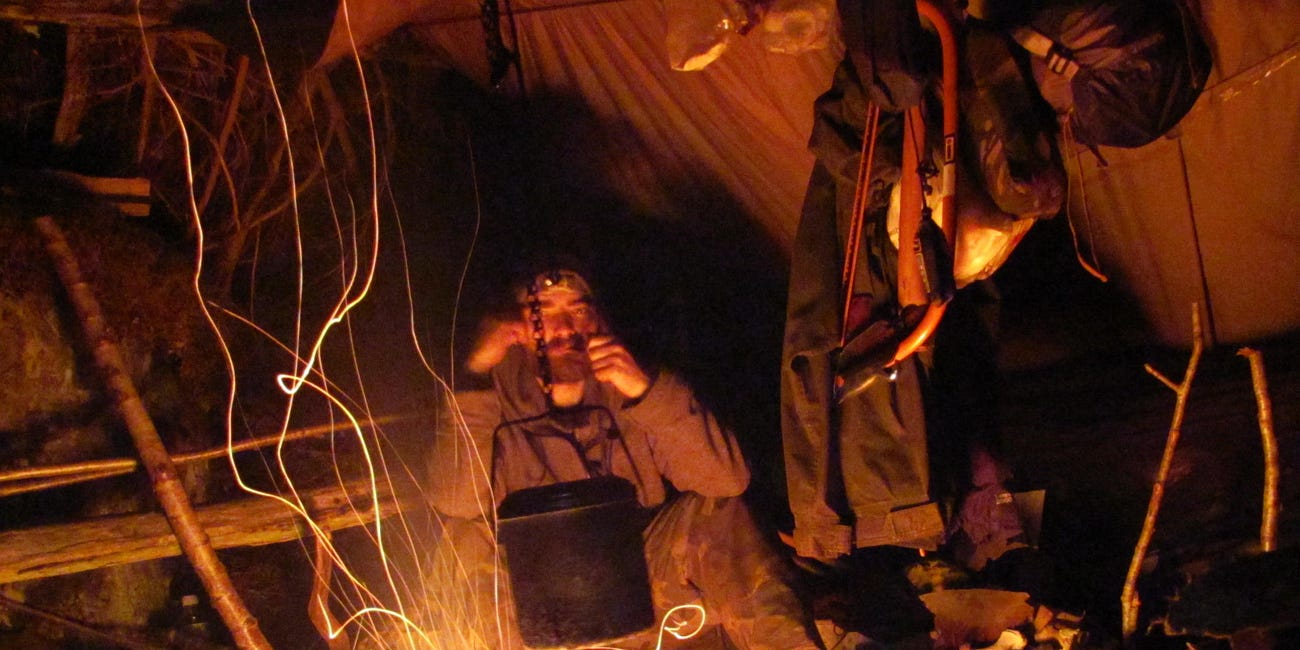
I love the final sentence to this. Sharp tools are definitely needed.
I am going to enjoy listening to this while I paint today! (Been looking forward to your return, and for what it's worth A Fall In Time is always worth a reread.)